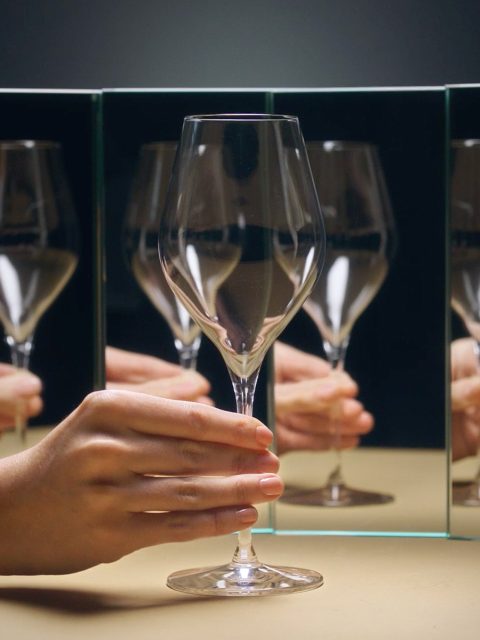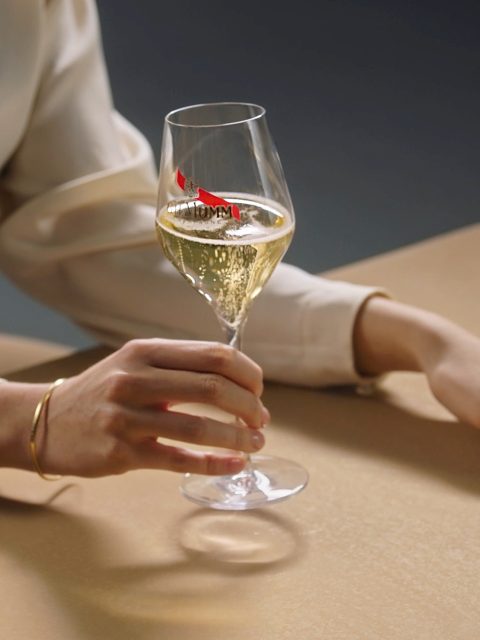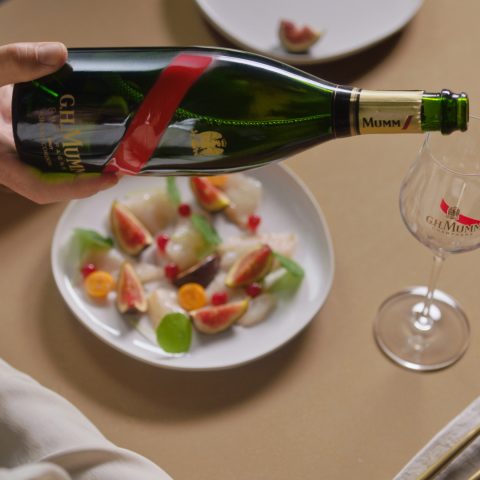Choosing the right glass for your champagne
When opening a prized bottle, you want every detail of the tasting experience to be just so. Choosing the right glass will play a big part in that process: flute, coupe or classic wine glass? Find out which format best complements the rich aromas of your Mumm Champagne.

The search for the perfect glass
Once released from the bottle, champagne will react to the shape of the glass in which it is served. The material itself—typically glass or crystal—has little impact on flavor and fizz.
Shape, on the other hand, is of the utmost importance. A good champagne glass should be tulip-shaped and tapered at the lip. This allows for optimal concentration and expression of the aromatic bouquet.
A clear glass with a long, thin stem is the ideal recipient. The stem makes sure that the warmth of your hand does not raise the temperature of the wine, while allowing you to admire its color and bubbles.
These days, glasses come in all shapes and sizes, from the staunchly traditional to the strikingly modern. But which is the best match for your champagne?
Wine glasses, coupes or flutes: which glass is best?
Champagne flutes are no longer considered to be the vessel of choice for serving champagne. Although flutes do help to maintain a certain freshness, they are too narrow to allow the wine to fully express itself. They also concentrate the bubbles right under your nose, masking the aromas.
Up until the 1970s, champagne was traditionally served in coupes. These wide-rimmed glasses were often made from crystal and, according to legend, were modelled on the curves of the Marquise de Pompadour, the official chief mistress of Louis XV. Others claim the shape was inspired by Marie-Antoinette, Queen of France and wife of Louis XVI. Iconic as it is, the coupe glass presents one major drawback: its wide rim maximizes contact between the champagne and the air, causing the bubbles to disperse too quickly, carrying with them the all-important olfactory molecules that convey the champagne’s aromas.


So, what is the ideal glass for serving champagne?
Champagne is above all a feast for the senses—the eyes, the nose and, finally, the palate—and the trademark fizz brings an additional dimension to the tasting experience. It may therefore come as a surprise to learn that white wine glasses are actually the perfect recipient from which to sip champagne.
Ideally, a good champagne glass should be tulip-shaped and tapered at the lip, allowing for optimal concentration and expression of the bouquet. The rounded base and narrow opening of a tulip-shaped wine glass allow the bubbles to form and rise at just the right speed.
Mumm Champagnes—and particularly the House’s vintage cuvées—will benefit from being given plenty of room in which to unveil their aromas and flavors. The bubbles play an important part in this process, rising up the length of the glass, carrying aromatic compounds that are released when they burst on the surface. Hence the importance of choosing the right glass when tasting champagne.



